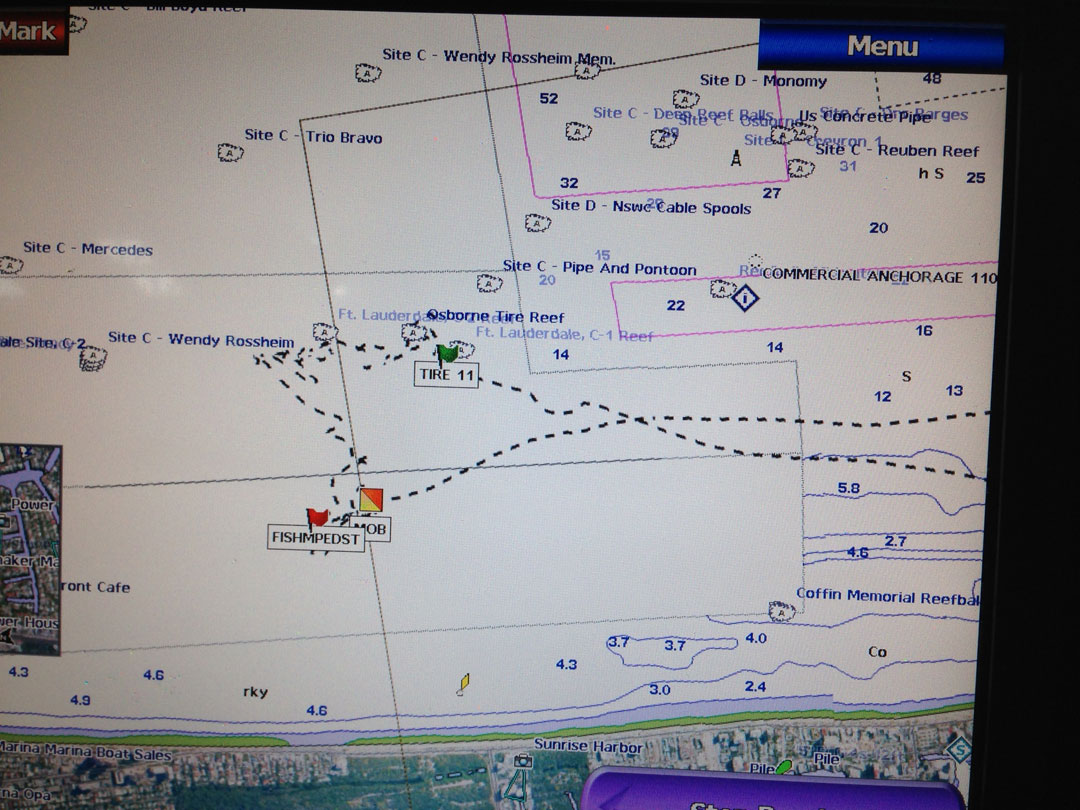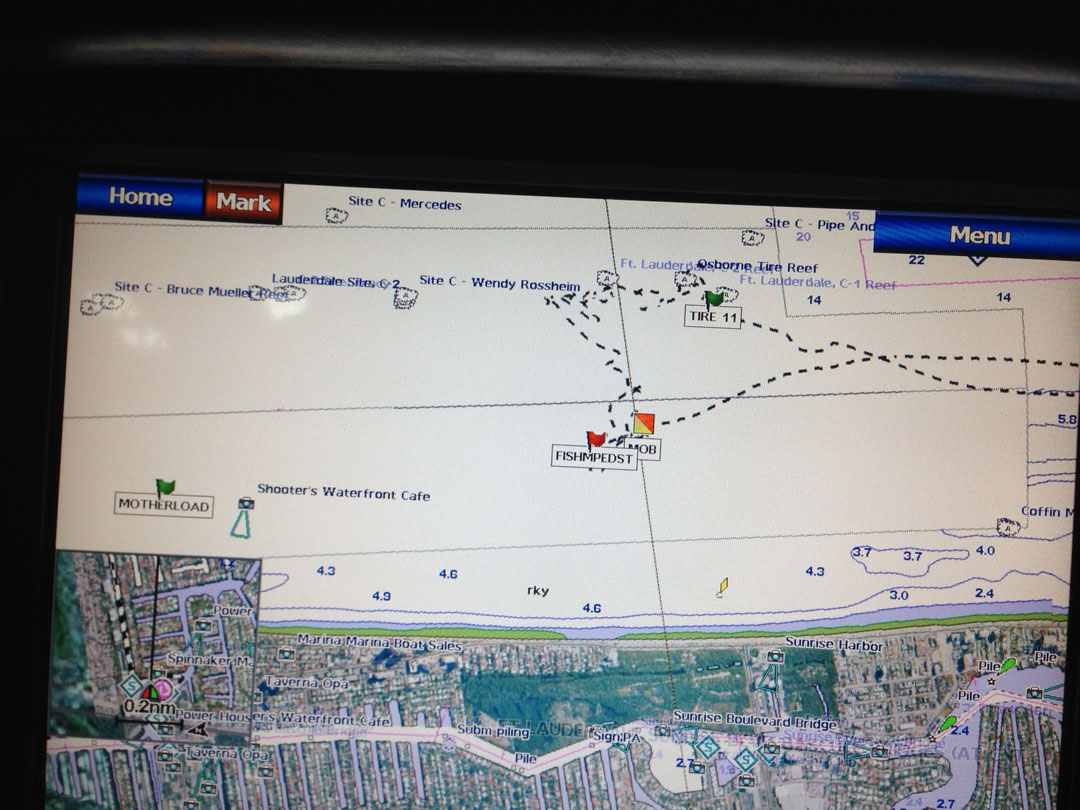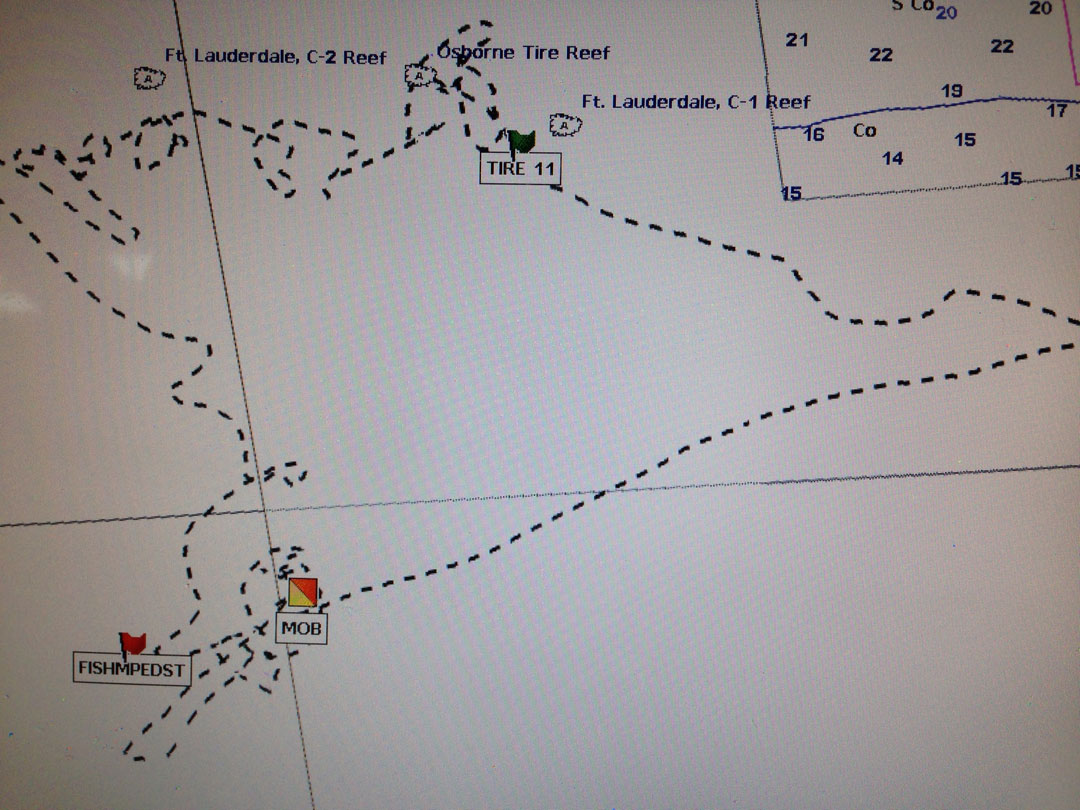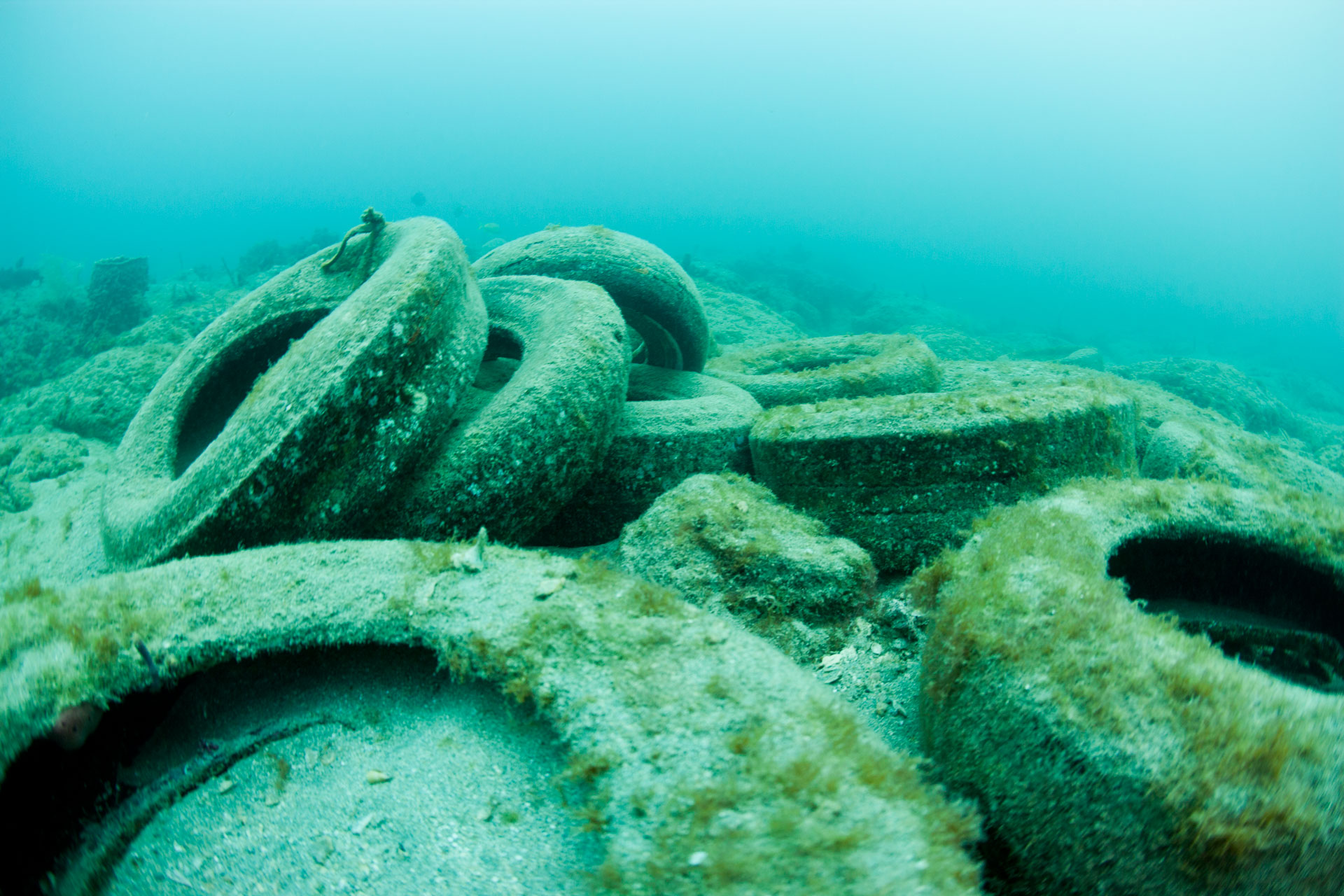
The full length video can be viewed here. As much of the relevant images have been included in the video, so as to be useful to a third party viewer who wish to acquire a first hand insight to the state of the Osborne Tire Reef and more importantly the surrounding area and the natural reef further towards shore.
A recent survey dive performed by Global Underwater Explorer divers Robert Carmichael, Paolo Passalacqua and Mikkel Pitzner as well as Ted Cole who captained the boat, proved the migration of tires to be much more extensive than the divers had expected and than what has previously been reported.
Said Robert Carmichael: “I’ve been diving these areas for years over decades and I’ve never seen it this bad”.
Tires were scattered everywhere and had migrated far from the Osborne Tire Reef and lots of them had piled up towards and onto the natural reef closer to shore at the depths of 20-36 feet and the beautiful reef of Fisherman Pedestal was severely and adversely affected.
The dive team dropped down onto the reef at the South-Western part of the Osborne Tire Reef and then headed towards West to reach the South-Western perimeter of the bulk of the tires. From here they turned North and ran the underwater propulsion vehicles until the North-Western perimeter was reached. A little reconnaissance was carried out in this area, before three tires were randomly selected for testing and evaluating specially designed lift bags for possible use for retrieval of migrating tires from the bottom.
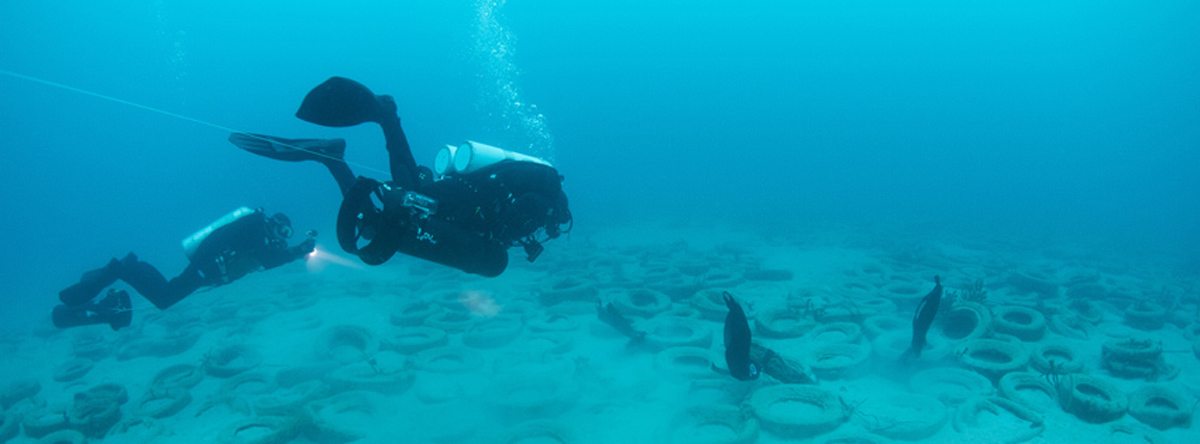
The test went really well and the system proved very efficient and useful. Choosing the 3 tires, looping the strap around each tire and clicking it shut onto each lift bag and sending them to the surface took less than 4 minutes collectively at leisurely pace. In addition to that the divers at no point needed to touch the bottom (let alone stand on the bottom) in order for the procedure to be carried out. For tires that have already migrated onto the natural reef this becomes even more important, so as not to cause even more harm to the natural formations of corals and algae on the reef.
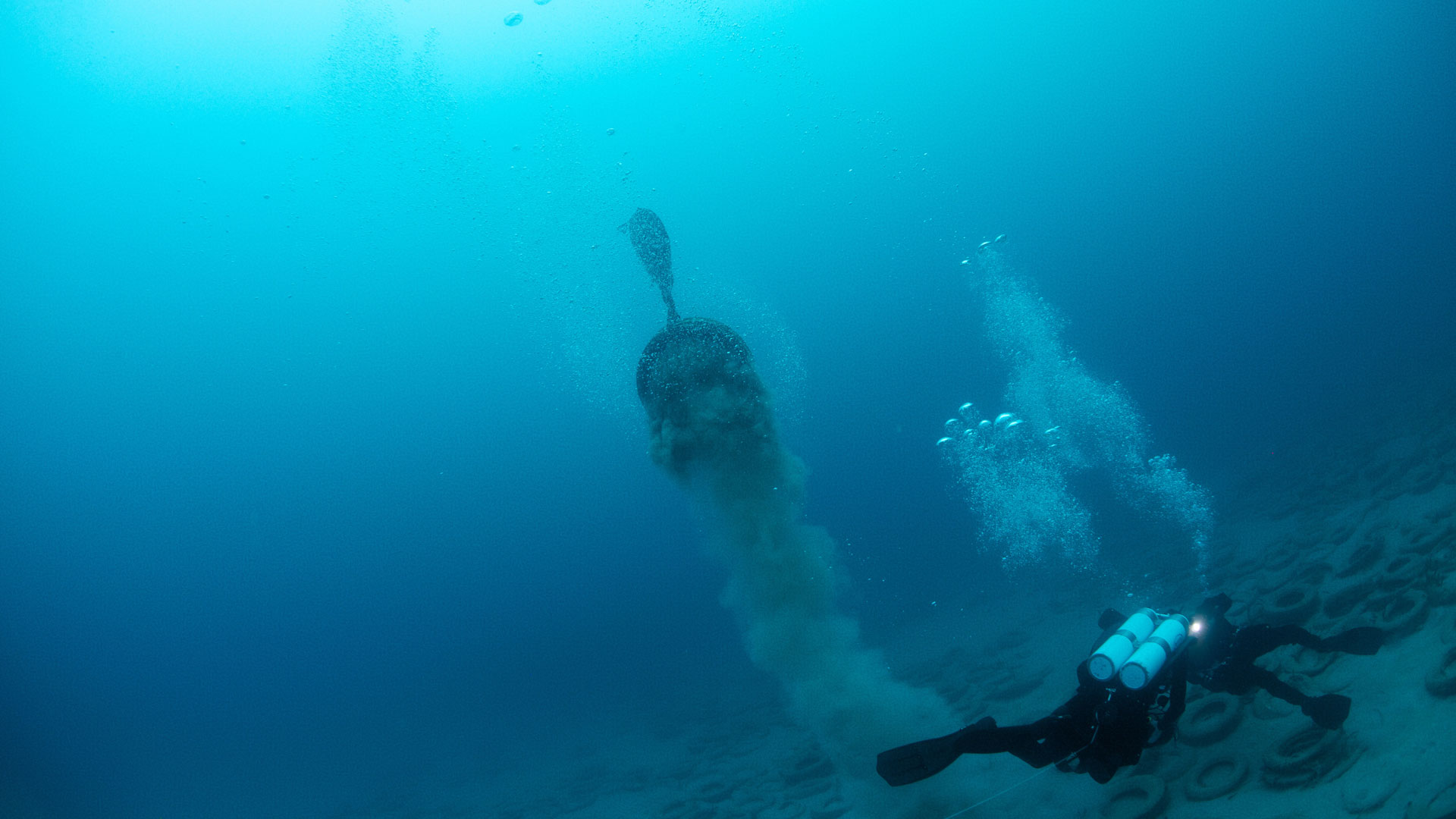
On the surface, the boat captain of the trailing boat was able to retrieve the tires and lift bags with ease.
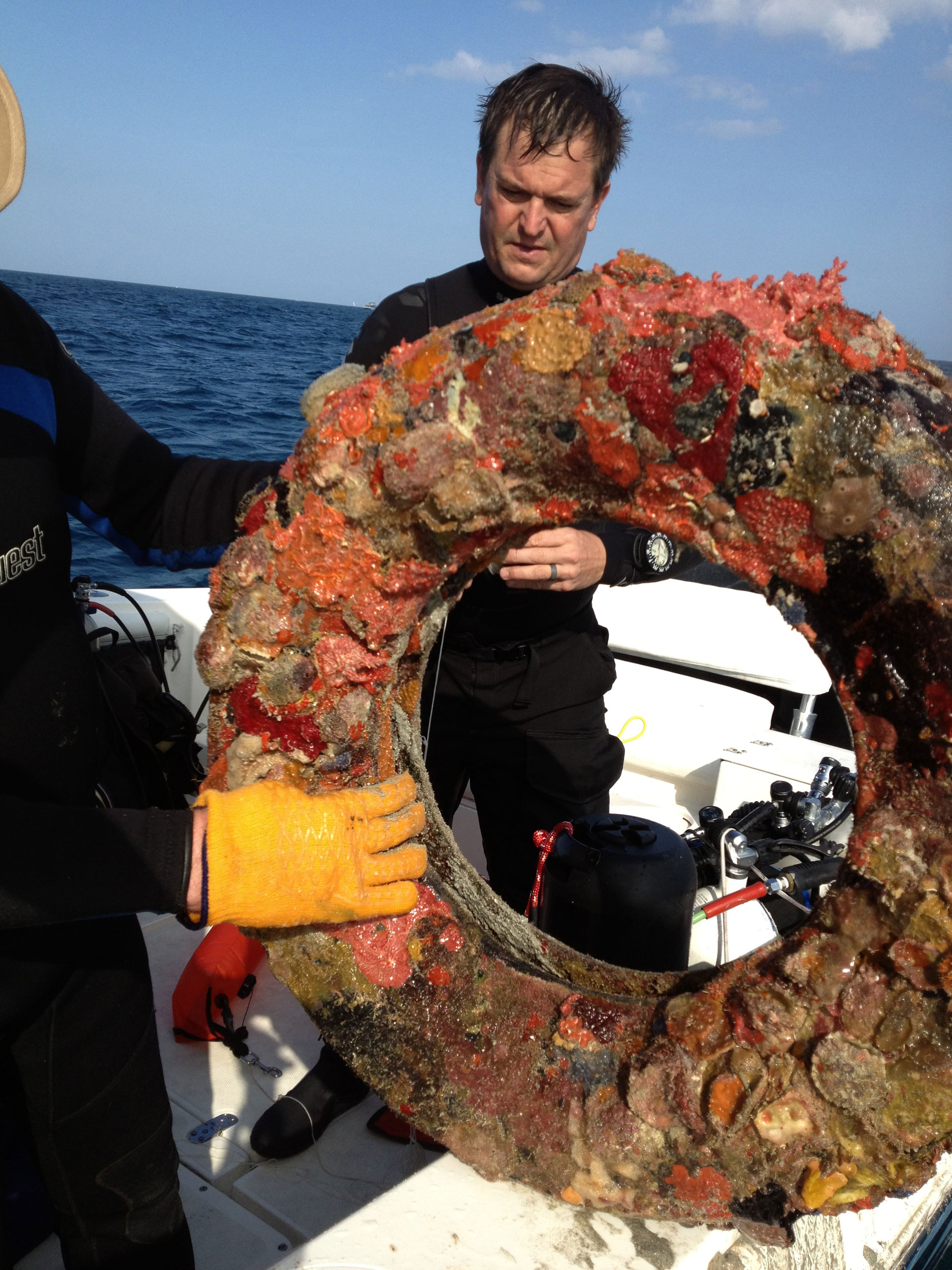
The lift bags used had been specially designed as a collaborative effort from Halcyon dive gear, Brownie’s Marine Group and the divers. The dive team learned of two minor improvements from this dive that will be incorporated to the lift bags to aid efficiency even further.
When the test of the tire retrieval method had been performed. The dive team continued their dive heading West towards shore and towards the natural reef and to Fisherman Pedestal to survey the conditions further.
It was very evident from the start that a substantial amount of tires are migrating from the Osborne Tire Reef. Even the perimeter of the bulk of the tires seem “fuzzy” at this point seeing that so many tires have shifted from what probably once was a very clearly defined line.
On the sandy bottom away from the Osborne Tire Reef and towards West tires were scattered here and there, sometimes almost forming a “string of pearls of tires” and at places near natural reef formation tires had piled up. Even more disturbing was the view of several tires already on the natural reef – sometimes in large bulks.
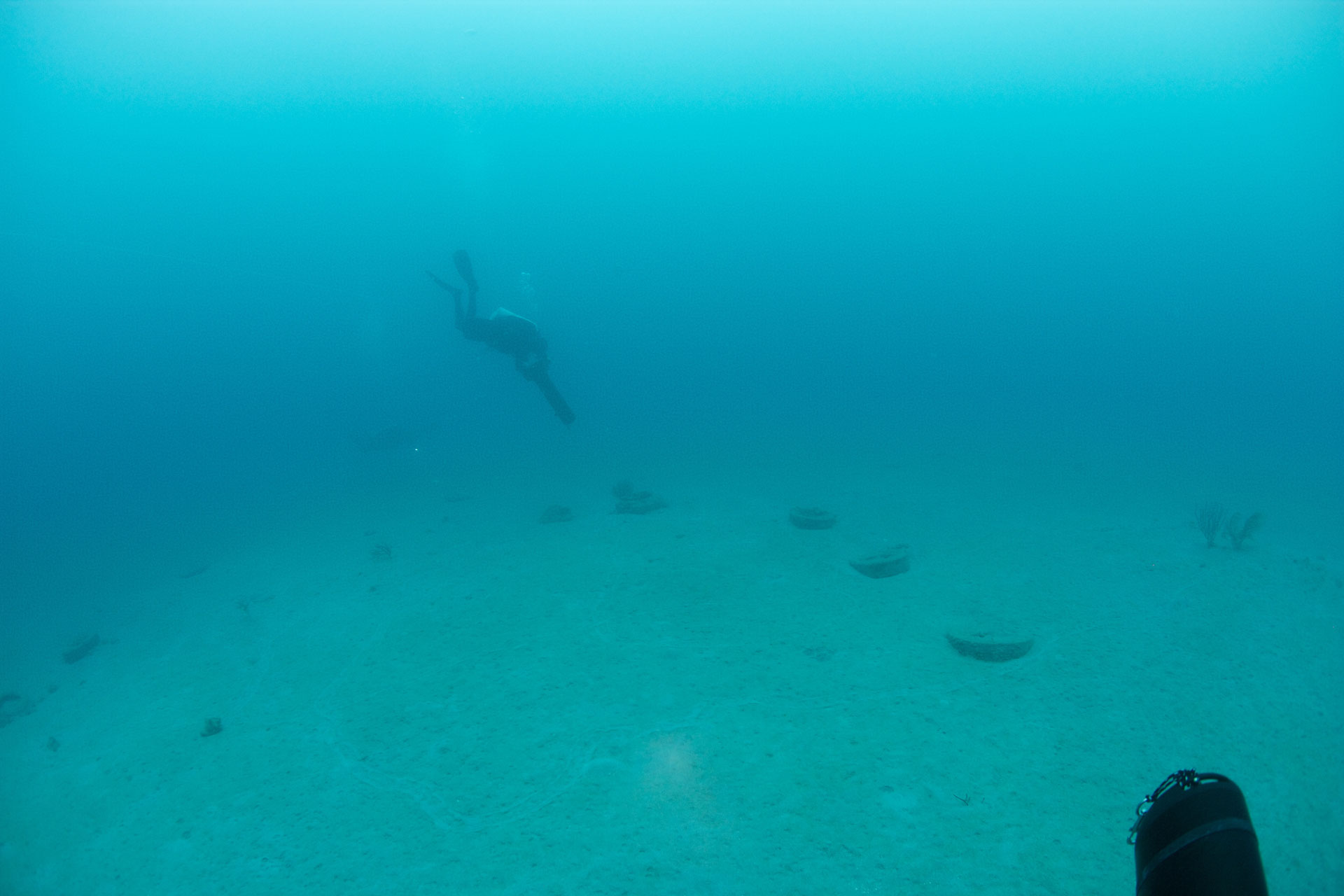
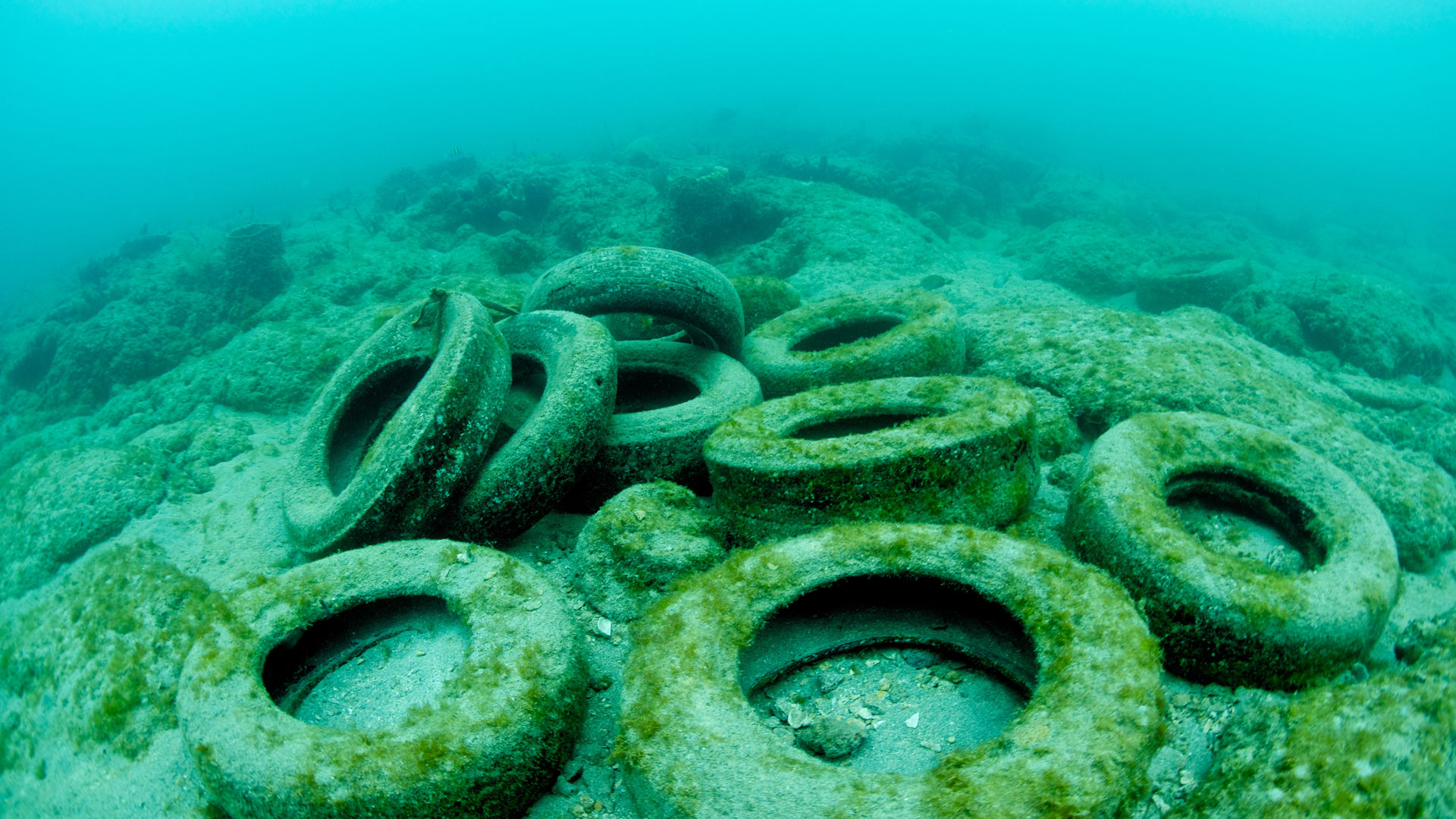
“The natural reef of Fisherman Pedestal seemed hit hard and had a lot of tires near its perimeter and on top of the reef. No doubt a lot of damage of natural growth had already taken place. It was a very sad sight”, said Mikkel Pitzner.
The following images are showing the breadcrumb trail of the survey dive. As can be seen, the dive covered several miles of ground.
